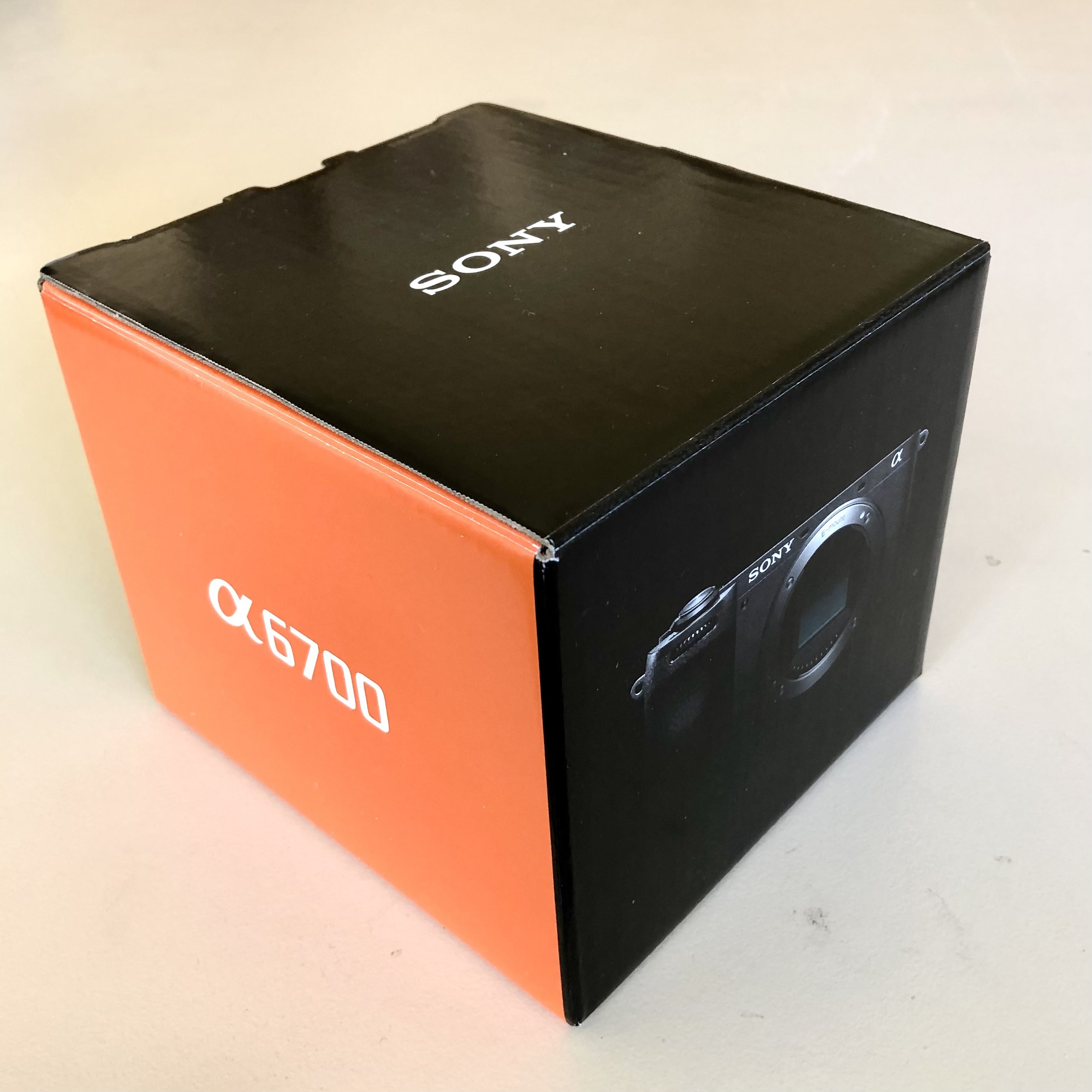Since 2017, the Sony A6500 has been my go-to camera. I have enjoyed using it, but I watched with increasing annoyance as superb new technology was added to the full-frame cameras with no signs of a new model APS-C camera. Sony abandoned the A-Mount they inherited from Minolta, so I wasn’t alone in wondering if their crop sensor camera line would be dropped. Admittedly, the A6600 was released four years ago, and more recently, the ZV series vlogging cameras. Tracking focus was a new feature in the A6600 that attracted many, but with my main interest in architecture and landscape, it wasn’t enough to make me upgrade. We finally have the A6700 with the Exmor backlit illuminated sensor, a Bionz RX processor and a new AI processor dedicated to subject recognition and eye autofocus. It’s visibly more chunky than the A6500, no doubt to accommodate the flippy screen, the larger battery, the additional AI chip, and to assist with heat dissipation.
I was surprised by how small the box was.
Contents of the box.
Comments on the A6700 are made with reference to my A6500 camera. The first impression when picking it up is the bigger grip which feels good in the hand. The fully articulated screen is wonderful and would almost be worth having without the other features. Looking more closely, the addition of a front dial wheel will be a great convenience. On the back of the camera, the dial wheel has a much firmer feel. Previously, it was difficult to rotate without accidentally selecting one of the four modes. The new menu layout (not new for the more recent FF cameras) is welcome. The addition of a sub-dial for the selection of still, movie and S&Q functions under the main selector has made space for the addition of three memory recall settings. That will enable me to take advantage of Mark Galer’s PAL workflow. The three memory recalls can be set for each of the still, movie and S&Q functions, 9 recalls in all. The AF-AF/MF switch and button have gone, replaced by an AF-ON button, which I expect will be more useful for many.
On the negative side, the ON-Off switch has been rotated about 45 degrees clockwise, making it less convenient unless you have a double-jointed index finger. I suppose my muscle memory will eventually be retrained, but this is an unnecessary change. Finally, the shoulder strap is more grippy on the inner surface. I carry the camera on my shoulder rather than the more goofy position around the neck. The improved grip will give greater assurance that it won’t slide off. The outside surface has bolder Sony logos which tells the world how wise I am in choosing the Sony camera system. [Grin].
When I took delivery, the small size of the box was a surprise. It seems Sony is borrowing from Apple’s minimalist philosophy. Inside was the A6700 camera with a body cap, an FZ100 battery, an eye cup for the viewfinder, a shoulder strap and the usual paperwork. I asked the Camera House manager, “Where’s the charger and cable”? The answer was that charging is in the camera via a USC-C cable. Sony has responded to the EU mandate that requires USB-C to be a universal standard. That’s a good thing. I have the cables, and it’s much simpler than messing with a battery charger and plugging it into a power outlet.
The magic at the heart of the camera lies in the Exmor R CMOS sensor. Originally developed in 2008 for phones, it made images captured by Apple phone cameras of usable quality. Iterations of scaled-up versions have been used in various Sony cameras. Fifteen years later we now see the Exmor sensor in a crop sensor camera for the first time. One benefit is improved high ISO performance.
The graphic above shows another significant benefit, the AI-driven subject recognition processor. It is dedicated to recognising a variety of subjects. It is reputed to have a very ‘sticky’ eye-AF that snaps onto and holds the eye of a rapidly moving subject. Great for action shots and portraits. I’ll be interested to try this out.


